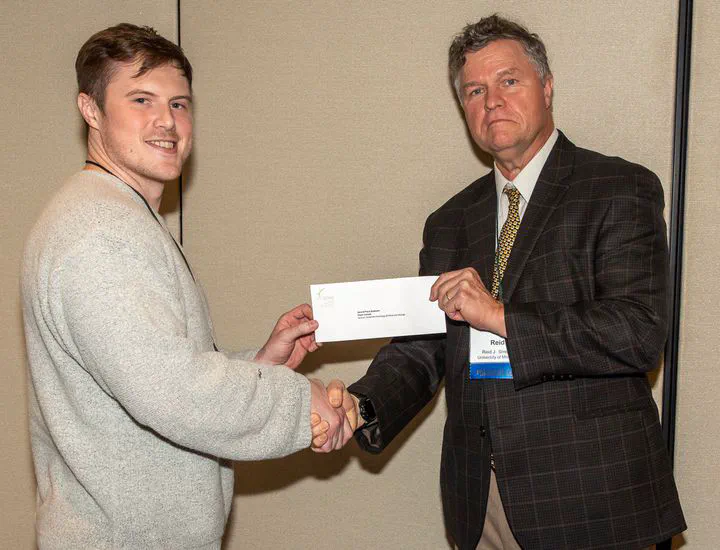Subtelomeric rearrangements cause glyphosate resistance in Eleusine indica
Dec 22, 2022· ,,,,·
0 min read
,,,,·
0 min read
Nicholas A Johnson
Nathan Hall
Chun Zhang
Qin Yu
Eric L Patterson
 Nicholas A. Johnson receives 2nd place in graduate student oral presentation competition at North Central Weed Science Society 2022
Nicholas A. Johnson receives 2nd place in graduate student oral presentation competition at North Central Weed Science Society 2022Abstract
Glyphosate resistance in Eleusine indica is often caused by copy number variation of glyphosate’s target, 5-enolpyruvylshikimate-3-phosphate (EPSP) synthase. In our project we wished to resolve the EPSPS CNV to better understand the mechanisms that led to its formation. After assembling chromosome scale genomes of both a susceptible and resistant individual and resequencing of eight individuals of both populations, we identified a novel, long, and highly repetitive EPSPS repeat structure. In the glyphosate-resistant Eleusine indica (goosegrass) individuals we studied, the 40kbp region flanking the EPSPS locus is located near the beginning of chromosome three in the subtelomere. Interestingly, across all resistant individuals, the 40kb region surrounding EPSPS is fused too, and co-duplicated with, a 35kbp region that is normally located around 1Mbp away from the EPSPS locus in glyphosate-susceptible individuals. Furthermore, highly repetitive, subtelomeric repeats, flank the entire coduplicated region. Long, repetitive genomic regions are difficult to resolve due to the redundancy of repeats leading to uncertainty in the assembly. We are currently unable to fully resolve the location of the EPSPS CNV; however, we are able to partially resolve its location. Contigs with similar regions to the region surrounding EPSPS and the coduplicated region were self-aligned, depicted graphically, and visually assessed to characterize macro-structure of repeat regions. Contigs with similar repeat macro-structures were aligned manually to construct putative models of EPSPS fused with the coduplicated region. A final model, the EPSPS-Cassette, was validated by aligning raw PacBio reads to each manually assembled junction. This research provides a method for resolving highly repetitive region and gives strong evidence that the EPSPS-Cassette is tandemly duplicated in alternating forward and reverse copies in the subtelomeric region near the beginning of chromosome three. In the future, bacterial artificial chromosome sequencing should confirm these findings.
Date
Dec 22, 2022 10:35 AM
Event
Location
Hyatt Regency Saint Louis at the Arch
315 Chestnut Street, Saint Louis, MO 63102